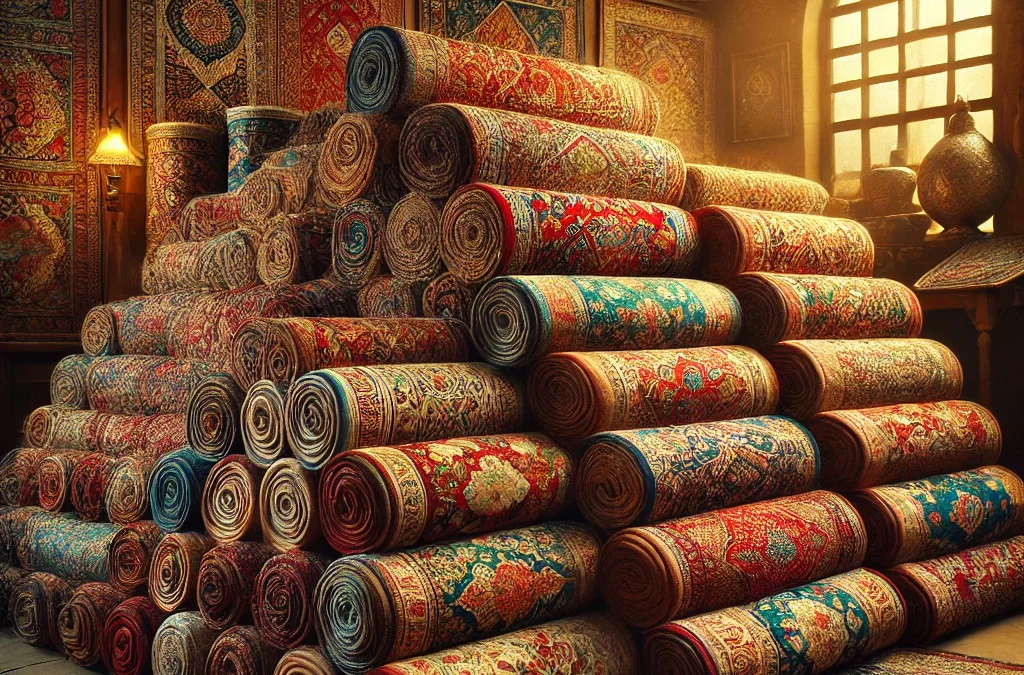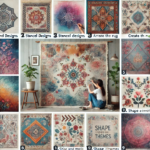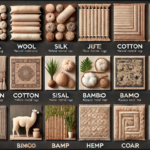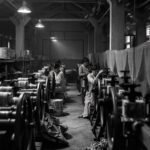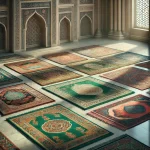The Best Vintage Old Rugs: Timeless Treasures for Your Home. Cultural Significance of Vintage Rugs.
The Economic and Cultural Impact of Vintage Old Rugs Exhibitions on GDP.
Vintage old rugs exhibitions serve as windows into history, art and culture. These events celebrate the intricate craftsmanship and rich heritage of handwoven rugs, often crafted centuries ago. While they offer a sensory feast of colors, textures, and patterns, these exhibitions also carry significant economic implications, contributing to local and national GDP through cultural tourism and trade.
1.The Cultural Significance of Vintage Rugs.
Vintage rugs are more than mere decorative items; they are historical artifacts. Originating from regions such as Persia, Anatolia, Central Asia, and the Caucasus, these rugs encapsulate the traditions, stories, and artistic sensibilities of their time. Exhibitions of these masterpieces educate visitors on the evolution of weaving techniques, dyeing methods, and cultural motifs, while preserving and promoting traditional craftsmanship.
2.Economic Contributions Through Tourism.
One of the primary ways vintage rug exhibitions impact GDP is through cultural tourism. These events draw art enthusiasts, collectors, and historians from around the world. Tourists attending such exhibitions contribute to the local economy by spending on accommodations, dining, transportation, and shopping. For instance, major cities hosting renowned rug exhibitions often report a surge in hotel bookings and local business revenue during the event period.
3.The Rug Trade and Commerce.
Exhibitions frequently serve as marketplaces where antique rugs are bought and sold. Collectors and dealers seek rare and valuable pieces, which can fetch significant prices. These sales directly contribute to GDP by generating income for artisans, dealers, and auction houses. Additionally, the export of purchased rugs from such exhibitions can enhance a country’s trade balance, further bolstering its economic standing.
4.Employment Opportunities.
The preparation and execution of vintage rug exhibitions create numerous job opportunities. From curators and historians to event planners and marketing professionals, these events require a multidisciplinary workforce. Furthermore, artisans and weavers benefit from renewed interest in traditional crafts, stimulating demand for their skills and products.
5.Long-term Cultural and Economic Benefits.
The ripple effects of such exhibitions extend beyond immediate financial gains. By fostering an appreciation for historical and cultural heritage, they encourage investments in cultural preservation and education. This, in turn, promotes sustainable economic growth by aligning cultural heritage with modern commerce.
Conclusion.
Vintage old rugs exhibitions are more than cultural celebrations; they are economic catalysts. By attracting tourists, facilitating trade, and creating employment, these events make significant contributions to GDP. They underscore the synergy between art and commerce, proving that preserving history can pave the way for economic prosperity.
Vintage Old Rugs: GDP Impact and Profit Potential.
The vintage rug market contributes to GDP growth through global trade, local craftsmanship, and tourism. High demand for antique rugs drives significant profits, particularly in niche markets. Their cultural value and artisanal appeal attract collectors, boosting exports and supporting small businesses. With proper marketing and sustainable sourcing, this sector holds lucrative potential for further .
Best Vintage Old Rugs: A Timeless Investment.
Best Sale Areas:
Explore our Vintage Old Rugs Exhibition, showcasing the finest antique rugs at amazing prices! Find the best deals in areas featuring:
- Persian Rugs.
- Turkish & Anatolian Rugs.
- Moroccan & Berber Rugs.
1. Why Choose Vintage Rugs?
1.Unmatched Craftsmanship:
Vintage old rugs are renowned for their exceptional craftsmanship and intricate designs, making them highly sought after by collectors and interior enthusiasts alike.
2.A Lasting Legacy:
These expensive rugs are not just decorative pieces; they are investments that increase in value over time, offering both beauty and financial worth.
Vintage rugs add warmth, charm, and history to any space. These timeless treasures are crafted with meticulous care and artistry, often blending intricate patterns and vibrant colors. Whether you’re looking for a rug to complement your contemporary home or searching for something to enhance a more traditional space, vintage rugs offer unmatched character and style. Below, we’ll explore the best vintage rugs you can incorporate into your home decor.
Vintage rugs are much more than mere floor coverings—they are pieces of art that reflect different cultures, craftsmanship, and history. Here’s why you should consider them:
- Unique Designs: Each vintage rug carries a unique design, whether it’s the intricate motifs of Persian carpets or the geometric patterns of Turkish Kilims.
- Sustainability: Buying vintage is an eco-friendly choice, as it reduces the demand for new materials and craftsmanship.
- Durability: Vintage rugs are often made from high-quality materials that have stood the test of time, meaning they are durable and can last for generations.
- Investment Value: Some vintage rugs appreciate in value, especially those from renowned regions or craftsmen.
2. Types of Best Vintage Rugs.
There are several types of vintage rugs that cater to different tastes and home styles. Here are the most popular:
Persian Rugs:
Persian rugs are arguably the most sought-after vintage rugs. Known for their intricate designs, high-quality wool, and vibrant colors, Persian rugs are a symbol of luxury and craftsmanship. These rugs often feature floral patterns or medallion designs.
Turkish Kilim Rugs:
Kilims are flatwoven rugs, usually with geometric patterns and bold colors. Turkish Kilims are prized for their versatility and rustic charm, making them ideal for modern and traditional settings alike.
Moroccan Rugs:
Moroccan rugs, particularly those from the Beni Ourain tribe, are famous for their simple yet bold patterns, made using natural, undyed wool. These rugs provide a modern, minimalist look while maintaining an organic warmth.
Indian Rugs:
Vintage Indian rugs are known for their rich colors and variety of weaving techniques, such as the famous Agra, Jaipur, and Kashmir rugs. They often feature floral or medallion designs and are crafted from fine wool and silk.
Tribal Rugs:
Tribal rugs often tell stories of the people who created them. These rugs are typically handwoven by indigenous tribes and feature primitive, symbolic designs. They are perfect for adding a unique, bohemian touch to your home.
3. How to Choose the Right Vintage Rug.
When selecting a vintage rug, it’s important to consider several factors:
- Size: Ensure the rug fits the space you have in mind. Measure your room or area to find the right dimensions.
- Style: Choose a rug that complements your existing decor. Whether you’re going for boho, eclectic, or traditional, there’s a vintage rug to suit every aesthetic.
- Material: Vintage rugs come in various materials such as wool, silk, cotton, and more. Wool rugs are durable and great for high-traffic areas, while silk rugs add a luxurious touch.
- Condition: Vintage rugs are often worn, so check for any damage or repairs. Some wear adds character, but make sure the rug is still functional and safe for use.
4. Where to Buy the Best Vintage Rugs.
Finding the best vintage rugs can be a thrilling hunt. Here are some great places to start your search:
- Antique Stores: Local antique shops often have curated collections of vintage rugs.
- Online Marketplaces: Websites like eBay, 1stDibs, and Etsy are home to sellers offering a range of vintage rugs from around the world.
- Specialty Rug Dealers: Many rug dealers specialize in antique and vintage rugs, ensuring quality and authenticity.
- Auctions: If you’re looking for a rare gem, consider attending an auction, where you can bid on high-quality vintage rugs.
5. Caring for Vintage Rugs.
To maintain the beauty of your vintage rug, proper care is essential:
- Regular Cleaning: Vacuum your rug regularly to remove dust and dirt. Avoid beater bars that could damage the fibers.
- Spot Cleaning: For spills, use a mild detergent and blot the area with a clean cloth. Do not rub, as this can spread the stain.
- Professional Cleaning: Consider having your vintage rug professionally cleaned every few years, especially if it’s made of delicate materials.
- Rug Padding: Use a rug pad to keep your vintage rug in place and prevent it from sliding or becoming damaged by friction.
6. Conclusion: Invest in Timeless Elegance.
Vintage rugs are more than just decor—they’re heirlooms that tell a story and bring timeless beauty to your home. Whether you choose a Persian masterpiece or a tribal Kilim, vintage rugs offer something unique for every space. Their quality, design, and history make them a worthwhile investment, adding character and elegance that lasts for generations.

